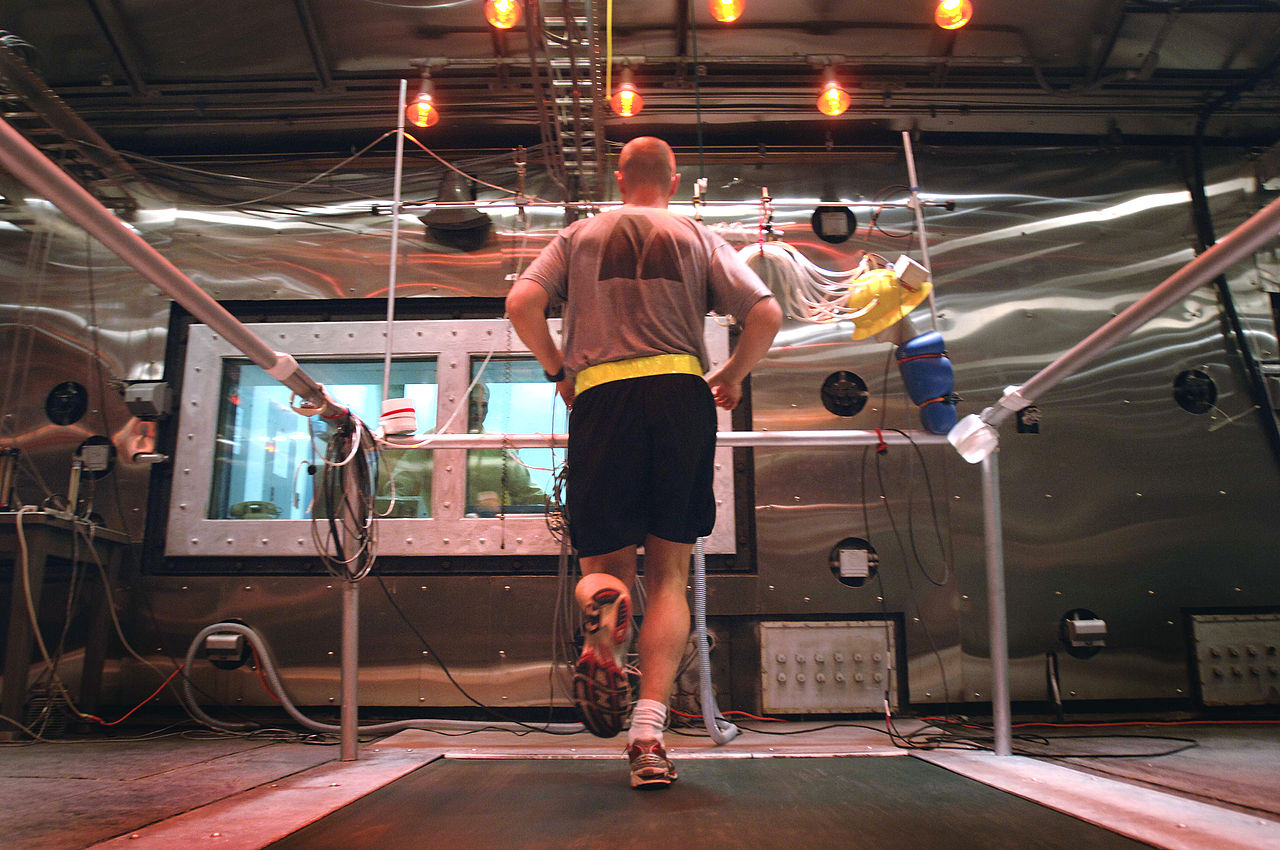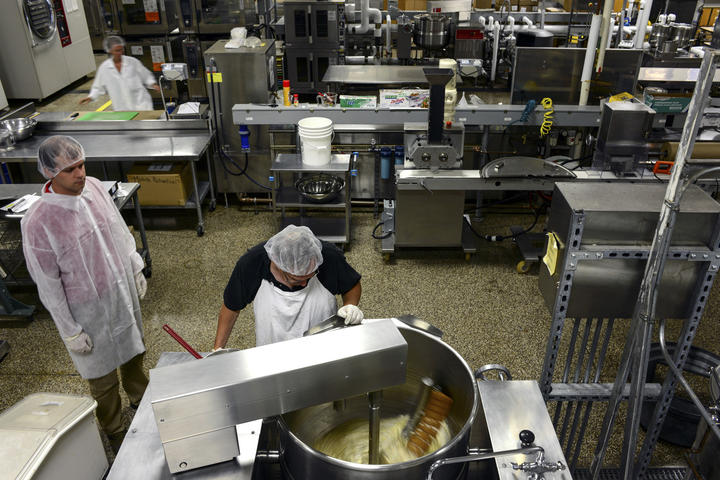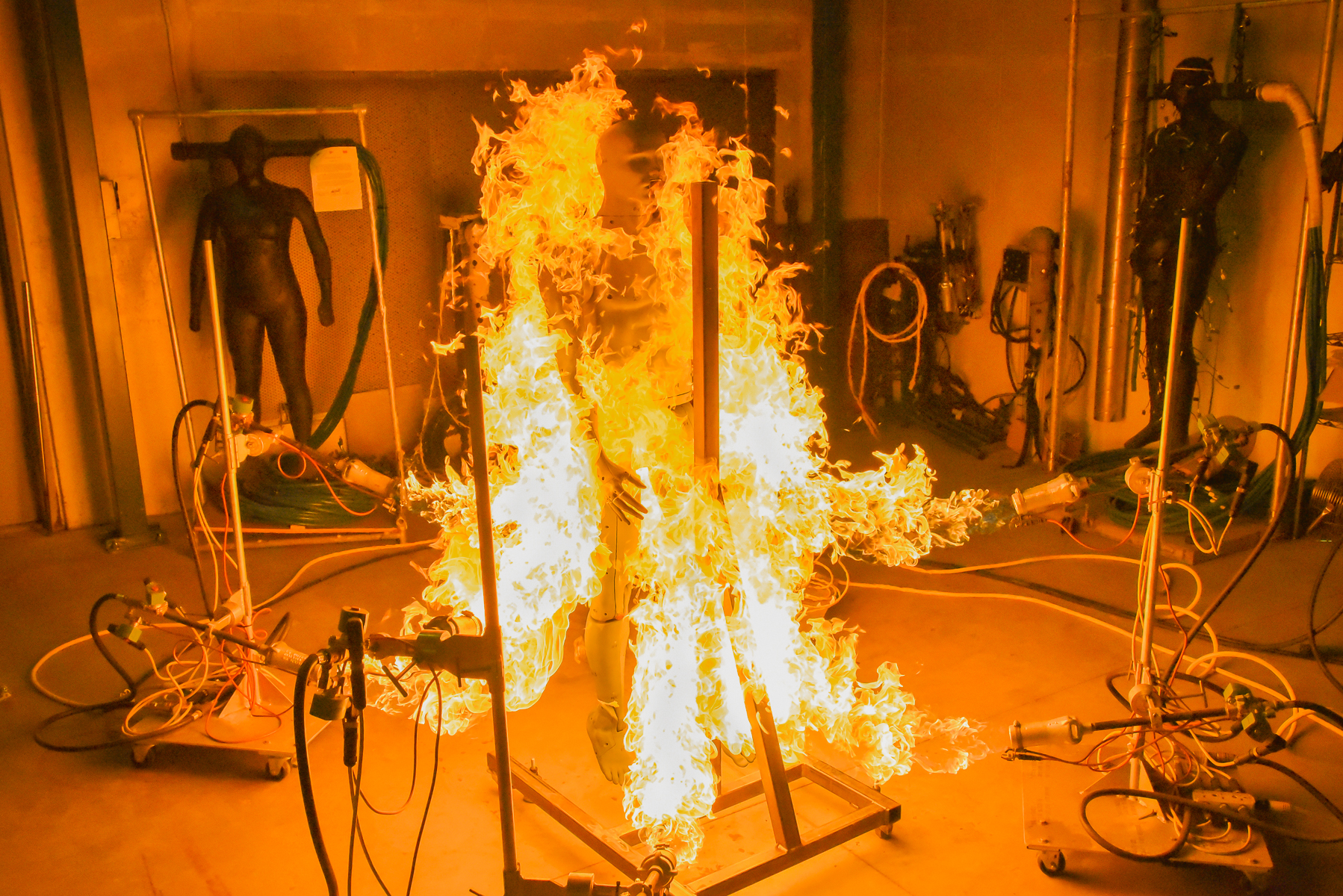Continuing my tour of interesting military facilities around the country, we turn our attention to the Army, specifically the Army Soldier Systems Center at Natick, Massachusetts. This is where the Army does research on improving the lives of soldiers. Not by giving them better guns, but by improving their equipment, ranging from boots to uniforms to tents.

A test in the Doroit Climate Chamber
Natick's facilities are mostly divided between two main organizations, the Combat Capabilities Development Command Soldier Center and the Army Research Institute of Environmental Medicine.1 Between them, they operate a number of unique facilities which provide a fascinating look at the level of effort which goes into even the smallest piece of military equipment.2
The flagship facility is probably the Doriot Climatic Chambers, essentially a smaller version of the McKinley Climatic Laboratory, focused on people and personal equipment instead of aircraft and vehicles. It's composed of two wind tunnels, each 15'x60'x10' and capable of producing winds up to 40 mph. Each is focused on a different end of the temperature spectrum, with the Tropical Wind Tunnel going from 0°F to 165°F and the Arctic Wind Tunnel being capable taking the temperature down to -120°F. Rain, solar heating, and humidity can all be precisely simulated, and each tunnel has a treadmill that lets researchers precisely monitor up to 10 test subjects under any climatic conditions. Doriot also has a lab for sleep studies and a specialized kitchen for studies into the links between performance and nutrition. Nor are the wind tunnels the only environmental facility at Natick. There are smaller environmental chambers, an altitude chamber, another chamber that can be set with a reduced proportion of oxygen, and a water immersion chamber.

Tube food is prepared in the kitchen
Nutrition is a big part of Natick's research, as it is the facility that provides all nutrition and field feeding research for the entire DoD. This covers everything from menu preparation for base kitchens and ships to developing new items for the famous MRE to producing the "tube foods", pureed food in a toothpaste-like tube, used by U-2 pilots on long missions. To support this, there's a small-scale industrial kitchen with such delightful devices as food extruders and an encruster that can automatically wrap a filling in some form of dough. Other facilities include package testing equipment, a microbiology lab, and equipment to characterize every facet of food, from nutrition to viscosity to color. Most of the work goes into making sure that the food will continue to be both safe and tasty after several years of storage, as well as the rigors of transport and use. Food service equipment is also developed at Natick, including a lab for analyzing stove burners, and a tilt table to make sure that any galley equipment the Navy buys will not be affected by the ship's roll.
Natick also does a great deal of work on human factors that affect the combat soldier, ranging from biomechanics (with the help of state-of-the-art motion capture systems) to cognitive performance (using immersive VR to study things like how soldiers respond to sudden threats) to how well new clothing works via an obstacle course. Of course, that's hardly the only way that Natick tests clothing. There's a massive facility for flame-testing of clothing and other equipment, to ensure that military uniforms will protect their wearers if things go wrong. One mannequin has 123 heat sensors, and can either be used for static tests of clothing or run through a dynamic course of flame jets. And the tests don't stop there. Abrasion tests. Air permeability tests. Color fading tests. Water absorption tests. Static electricity dissipation tests. Tearing tests. Tests to see how it stands up to being washed. Tests to make sure it doesn't absorb chemical weapons.

A uniform flame test
Nor is Natick's testing limited to uniform clothing. Body armor. Boots. Tents. Load-bearing gear. Chemical protective suits. Ballistic glasses. Parachutes and rigging gear for airdrop of cargo and personnel. And extensive fabrication facilities that let the personnel there participate in the development of all of this. Everything from sophisticated polymer extruders and 3D printers to sewing machines and welding gear.
Overall, Natick is one of America's leading centers for the testing of both personal equipment and human performance in unusual environments. The full catalog of weird and wonderful facilities is much longer than I've recounted here, all of which show some tiny facet of the work that goes into making our military the best-equipped in history.
1 Trying to figure out the actual org chart at Natick requires spending way too much time staring at the worst sort of DoD administrative documentation. So I'm going to ignore it and just treat everything as falling under one roof. ⇑

Comments
That's an impressive set of facilities. Is there any program in place to share them, or research from them, with the civilian world? On the one hand it seems like something that could turn into a distraction, but on the other a lot of generally useful results should come out.
Actually, yes. Most federal facilities of this type (all three profiled so far in this series among them, IIRC) are allowed and encouraged to do work for the commercial sector when they have excess capacity. This benefits everybody because it reduces costs to the government and lets the companies tap world-class expertise.